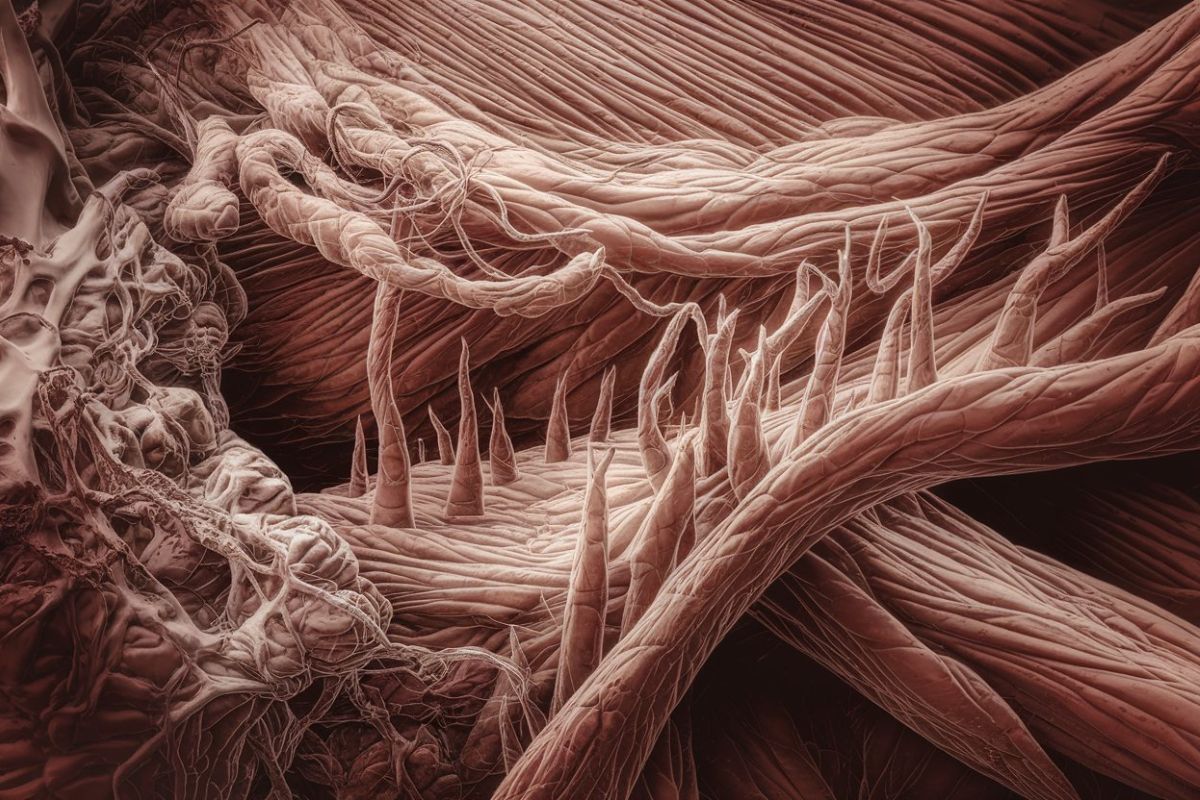
Desmin-Related Myofibrillar Myopathy (DRM) is a rare genetic disorder affecting muscle function. What causes DRM? Mutations in the DES gene lead to abnormal desmin protein, which disrupts muscle fibers. Symptoms often include muscle weakness, cramps, and stiffness, typically starting in adulthood. How is DRM diagnosed? Genetic testing and muscle biopsies are key diagnostic tools. Is there a cure? Currently, no cure exists, but treatments focus on managing symptoms and improving quality of life. Physical therapy, medications, and lifestyle changes can help. Why is DRM important to understand? Awareness and research can lead to better treatments and support for those affected.
Key Takeaways:
- Desmin-Related Myofibrillar Myopathy is a rare genetic disorder causing muscle weakness and heart complications. Genetic mutations play a significant role, and early diagnosis is crucial for effective management.
- While there is no cure for Desmin-Related Myofibrillar Myopathy, treatments like physical therapy, medications, and cardiac care can help alleviate symptoms and improve quality of life. Ongoing research offers hope for future advancements.
What is Desmin-Related Myofibrillar Myopathy?
Desmin-Related Myofibrillar Myopathy (DRM) is a rare genetic disorder affecting muscle function. It primarily impacts skeletal and cardiac muscles, leading to muscle weakness and other complications.
- Desmin is a type of protein found in muscle cells, crucial for maintaining the structure and function of muscle fibers.
- Myopathy refers to any disease affecting muscle tissue, causing muscle weakness and dysfunction.
- Myofibrils are the basic rod-like units of muscle cells responsible for muscle contraction.
Causes of Desmin-Related Myofibrillar Myopathy
Understanding the causes of DRM helps in diagnosing and managing the condition effectively. Genetic mutations play a significant role in the development of this disorder.
- Genetic Mutations in the DES gene, which encodes the desmin protein, are the primary cause of DRM.
- Inheritance Patterns can be autosomal dominant or autosomal recessive, meaning the disorder can be passed down from one or both parents.
- Spontaneous Mutations can also occur, leading to DRM even in individuals without a family history of the condition.
Symptoms of Desmin-Related Myofibrillar Myopathy
Recognizing the symptoms of DRM is crucial for early diagnosis and treatment. Symptoms can vary widely among individuals.
- Muscle Weakness is the most common symptom, often starting in the legs and progressing to other parts of the body.
- Cardiomyopathy can develop, affecting the heart's ability to pump blood effectively.
- Respiratory Issues may arise due to weakened respiratory muscles, leading to breathing difficulties.
- Muscle Pain and cramps are frequently reported by individuals with DRM.
- Fatigue is a common complaint, as muscle weakness and pain can lead to overall tiredness.
- Difficulty Walking and maintaining balance can occur as the disease progresses.
- Swallowing Problems may develop if the muscles involved in swallowing are affected.
Diagnosis of Desmin-Related Myofibrillar Myopathy
Accurate diagnosis of DRM involves a combination of clinical evaluation, genetic testing, and other diagnostic tools.
- Muscle Biopsy is often performed to examine muscle tissue under a microscope for characteristic changes.
- Genetic Testing can identify mutations in the DES gene, confirming the diagnosis.
- Electromyography (EMG) measures the electrical activity of muscles, helping to assess muscle function.
- Cardiac Evaluation including echocardiograms and ECGs, is essential to monitor heart function.
- Family History assessment can provide clues about the inheritance pattern and risk to other family members.
Treatment and Management of Desmin-Related Myofibrillar Myopathy
While there is no cure for DRM, various treatments and management strategies can help alleviate symptoms and improve quality of life.
- Physical Therapy can help maintain muscle strength and flexibility.
- Occupational Therapy assists individuals in adapting to daily activities and maintaining independence.
- Medications such as pain relievers and anti-inflammatory drugs can help manage symptoms.
- Cardiac Care including medications and lifestyle changes, is crucial for those with cardiomyopathy.
- Respiratory Support like ventilators or other breathing aids may be necessary for individuals with severe respiratory issues.
- Nutritional Support ensures adequate nutrition, especially if swallowing difficulties are present.
- Regular Monitoring by healthcare professionals is essential to manage the progression of the disease.
Research and Future Directions
Ongoing research aims to better understand DRM and develop more effective treatments. Advances in genetics and molecular biology hold promise for the future.
- Gene Therapy is being explored as a potential treatment to correct genetic mutations.
- Stem Cell Research offers hope for regenerating damaged muscle tissue.
- Clinical Trials are ongoing to test new medications and therapies for DRM.
- Patient Registries help researchers gather data on the natural history of the disease and its progression.
- Collaborative Research efforts between scientists, clinicians, and patient advocacy groups are crucial for advancing knowledge and treatment options.
Living with Desmin-Related Myofibrillar Myopathy
Living with DRM can be challenging, but support and resources are available to help individuals and families cope with the condition.
- Support Groups provide a platform for individuals and families to share experiences and offer mutual support.
- Educational Resources help patients and caregivers understand the disease and its management.
- Advocacy Organizations work to raise awareness and funding for research on DRM.
- Assistive Devices such as wheelchairs and braces can improve mobility and independence.
- Mental Health Support is important for coping with the emotional and psychological impact of living with a chronic condition.
Final Thoughts on Desmin-Related Myofibrillar Myopathy
Desmin-Related Myofibrillar Myopathy (DRM) is a rare genetic disorder that affects muscle function. Understanding DRM can help those affected manage symptoms better. Key points include its genetic basis, symptoms like muscle weakness, and the importance of early diagnosis. Treatments focus on managing symptoms since there's no cure yet. Research continues to explore potential therapies.
Raising awareness about DRM can lead to better support and resources for patients. Sharing information helps build a community of understanding and care. If you or someone you know shows symptoms, consulting a healthcare professional is crucial. Staying informed and connected with support groups can make a significant difference.
Thanks for joining us on this journey through the facts about DRM. Stay curious and keep learning. Knowledge empowers us to face challenges with confidence.
Frequently Asked Questions
Was this page helpful?
Our commitment to delivering trustworthy and engaging content is at the heart of what we do. Each fact on our site is contributed by real users like you, bringing a wealth of diverse insights and information. To ensure the highest standards of accuracy and reliability, our dedicated editors meticulously review each submission. This process guarantees that the facts we share are not only fascinating but also credible. Trust in our commitment to quality and authenticity as you explore and learn with us.


